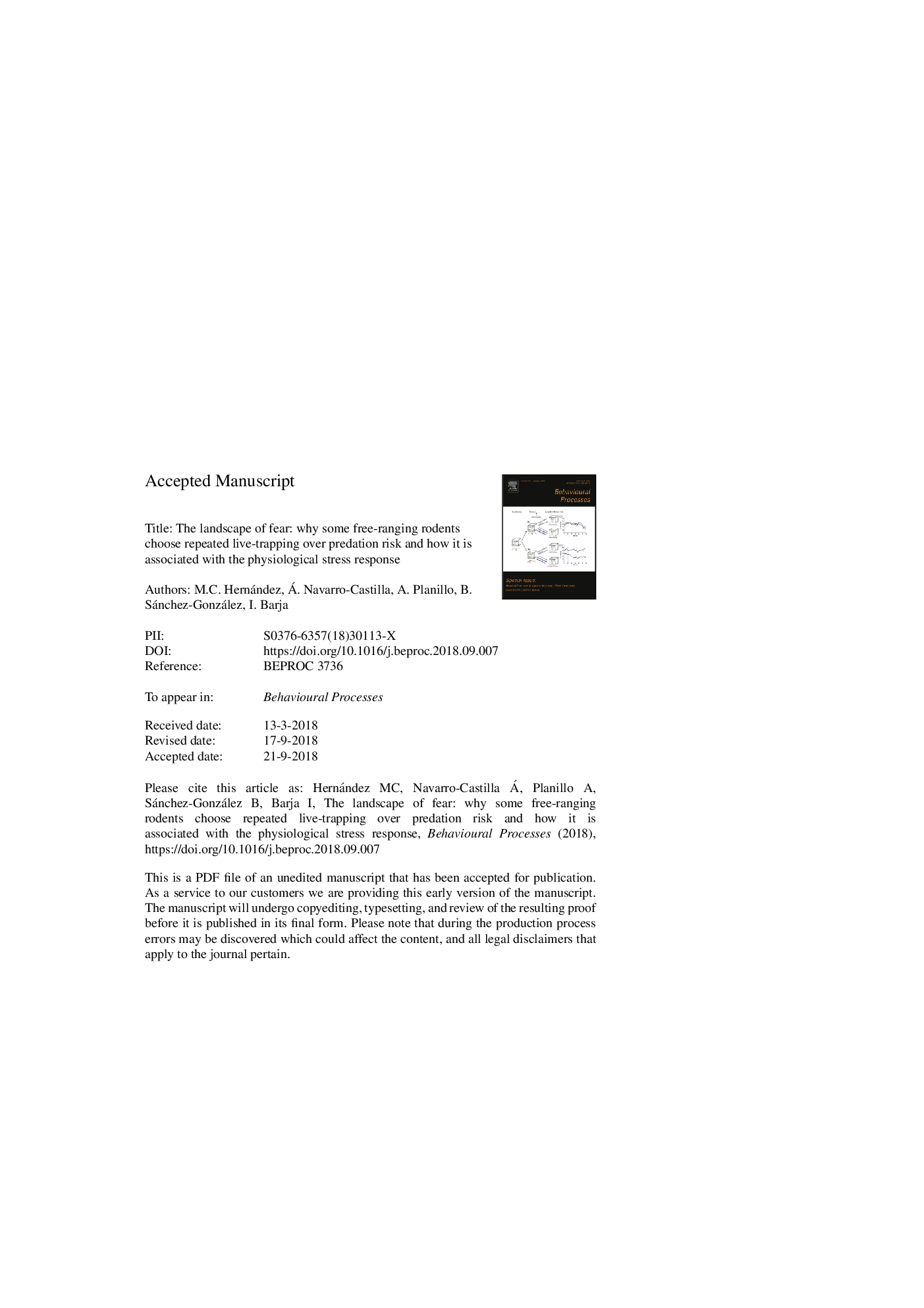| کد مقاله | کد نشریه | سال انتشار | مقاله انگلیسی | نسخه تمام متن |
|---|---|---|---|---|
| 11030799 | 1646153 | 2018 | 36 صفحه PDF | دانلود رایگان |
عنوان انگلیسی مقاله ISI
The landscape of fear: Why some free-ranging rodents choose repeated live-trapping over predation risk and how it is associated with the physiological stress response
ترجمه فارسی عنوان
چشم انداز ترس: چرا برخی از جوندگان آزاد محدوده را انتخاب می کنند مکرر زنده ماندن در معرض خطر شکار و چگونه آن را با پاسخ استرس فیزیولوژیکی
دانلود مقاله + سفارش ترجمه
دانلود مقاله ISI انگلیسی
رایگان برای ایرانیان
کلمات کلیدی
موضوعات مرتبط
علوم زیستی و بیوفناوری
علوم کشاورزی و بیولوژیک
علوم دامی و جانورشناسی
چکیده انگلیسی
Live trapping is an essential element of field ecological studies. However, the act of trapping provides two types of conditional benefits (food from the bait when hungry, and refuge from a predator when threatened) against one type of drawback (confinement). Our understanding of how animals assess the two benefits against the lone risk determines how we interpret classic field studies in chemical ecology and wildlife management. Here, we studied wood mice responses to these risks and rewards of field trapping by examining experience through recapture and faecal corticosterone metabolites (FCM) as a physiological response indicator. Wood mice were live-trapped in two different plots subjected to two distinct phases: phase 1, absence of predator cues, and phase 2, in which traps were treated with red fox faeces. During phase 1, the recapture percentage was lower indicating that mice avoided traps while FCM levels in recaptured mice were higher. On the contrary, during phase 2, despite the total number of captures was lower we found an increase in the recapture percentage and FCM levels did not increase in recaptured mice. Our results suggest that under increased risk perception traps could be likely considered as a suitable shelter and thus, for some individuals the benefits of traps may outweigh their risks. In addition, we discovered that the effects of combining two stressors do not result in the addition of the response originated by each factor separately.
ناشر
Database: Elsevier - ScienceDirect (ساینس دایرکت)
Journal: Behavioural Processes - Volume 157, December 2018, Pages 125-132
Journal: Behavioural Processes - Volume 157, December 2018, Pages 125-132
نویسندگان
M.C. Hernández, Á. Navarro-Castilla, A. Planillo, B. Sánchez-González, I. Barja,
